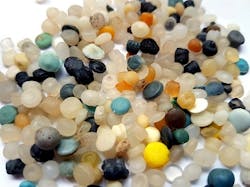Input needed on microplastics study
LONDON, England - The European Commission has commissioned a new study to quantify losses of microplastics from various sources and investigate options to reduce losses to the aquatic environment.
The study will address the sources, pathways and options for reducing the loss of microplastics emitted from, but not intentionally added into products. This includes products such as textiles, vehicle tyres and artificial sports pitches.
The impacts microplastic have on the food chain and human health will also be investigated to inform a prioritised list of measures to be presented in the final report due in November 2017.
UK environmental consultancy Eunomia Research & Consulting, in partnership with ICF, will lead the study.
Eunomia is inviting a wide range of stakeholders to engage with the project by registering for updates at www.eumicroplastics.com. The team is looking for input from:
- Retailers, manufacturers and trade associations for;
- Clothing, textiles, washing machines,
- Road surfaces, road paint, and vehicle tyres;
- Plastics manufacturing;
- Sports surfaces;
- Government;
- NGOs;
- Consumers.
Other subject experts contributing to the project include Dr Richard Thompson from Plymouth University, Dr Peter Kershaw an independent consultant and Dr Panayiota Apostolaki (MRAG), Professor Snejana Moncheva (IO-BAS, Outi Setala (SYKE), Peter Sundt (Mepex) and Xenia Loizidou (ISOTECH).
Chris Sherrington, principal consultant and director of the project said: “The issue of microplastics in the aquatic environment, and indeed the terrestrial environment, is now attracting serious attention from the public and policymakers alike. Scientific understanding of the impacts is developing rapidly, but remains far from complete. However, it is clear that action needs to be taken to reduce the amount of plastic entering the environment each year. It’s thus important that all potential measures are considered in the light of the best available evidence, in order to achieve improved environmental outcomes in the most cost-effective and equitable way.”
###
Read more

